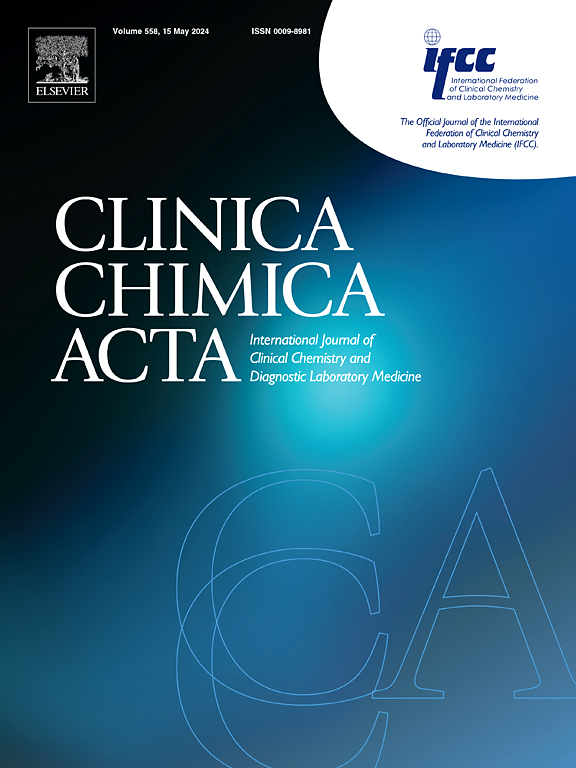RNA biosensors for detection of pancreatic cancer
IF 3.2
3区 医学
Q2 MEDICAL LABORATORY TECHNOLOGY
引用次数: 0
Abstract
Pancreatic cancer is recognized as one of the most lethal types of cancer globally, characterized by a high mortality rate and a bleak prognosis, which greatly contributes to cancer-related deaths. Forecasts suggest that by 2030, pancreatic cancer will exceed other cancer types in prevalence. The disease presents considerable difficulties owing to the lack of prominent symptoms in its early stages, restricted options for early detection, rapid progression, and unfavorable outcomes. Presently, traditional methods for diagnosing pancreatic cancer primarily rely on imaging techniques. However, these methods often entail significant costs, require considerable time, and necessitate specialized skills for both operating the equipment and interpreting the resulting images. To overcome these obstacles, the use of biosensors has been proposed as a potentially valuable tool for the early detection of pancreatic cancer. MicroRNAs (miRs), a type of small non-coding RNA molecules, have emerged as highly sensitive molecular diagnostic tools that have the potential to function as precise indicators for a range of diseases, including cancer. Biosensors have been suggested as a potential solution for tackling these challenges, offering a promising approach for the early detection of pancreatic cancer. Small non-coding RNA molecules known as MicroRNAs (miRs) have become recognized as extremely sensitive molecular diagnostic tools and can act as precise biomarkers for different diseases, such as cancer. Moreover, this manuscript presents a thorough summary of the latest innovations in nano-biosensors that have been specifically developed for the identification of non-coding RNAs related to pancreatic cancer.
用于胰腺癌检测的RNA生物传感器
胰腺癌被认为是全球最致命的癌症类型之一,其特点是死亡率高,预后差,这在很大程度上导致了癌症相关死亡。预测显示,到2030年,胰腺癌的患病率将超过其他类型的癌症。由于在早期阶段缺乏明显的症状,早期发现的选择有限,进展迅速以及不利的结果,该疾病带来了相当大的困难。目前,传统的胰腺癌诊断方法主要依靠影像学技术。然而,这些方法往往需要大量的成本,需要相当长的时间,并且需要操作设备和解释所产生的图像的专业技能。为了克服这些障碍,生物传感器的使用被认为是胰腺癌早期检测的潜在有价值的工具。MicroRNAs (miRs)是一种小的非编码RNA分子,已经成为高度敏感的分子诊断工具,有可能作为包括癌症在内的一系列疾病的精确指标。生物传感器被认为是解决这些挑战的潜在解决方案,为胰腺癌的早期检测提供了一种有希望的方法。被称为microrna (miRs)的小非编码RNA分子已经被认为是极其敏感的分子诊断工具,可以作为不同疾病(如癌症)的精确生物标志物。此外,本文还全面总结了纳米生物传感器的最新创新,这些传感器专门用于识别与胰腺癌相关的非编码rna。
本文章由计算机程序翻译,如有差异,请以英文原文为准。
求助全文
约1分钟内获得全文
求助全文
来源期刊

Clinica Chimica Acta
医学-医学实验技术
CiteScore
10.10
自引率
2.00%
发文量
1268
审稿时长
23 days
期刊介绍:
The Official Journal of the International Federation of Clinical Chemistry and Laboratory Medicine (IFCC)
Clinica Chimica Acta is a high-quality journal which publishes original Research Communications in the field of clinical chemistry and laboratory medicine, defined as the diagnostic application of chemistry, biochemistry, immunochemistry, biochemical aspects of hematology, toxicology, and molecular biology to the study of human disease in body fluids and cells.
The objective of the journal is to publish novel information leading to a better understanding of biological mechanisms of human diseases, their prevention, diagnosis, and patient management. Reports of an applied clinical character are also welcome. Papers concerned with normal metabolic processes or with constituents of normal cells or body fluids, such as reports of experimental or clinical studies in animals, are only considered when they are clearly and directly relevant to human disease. Evaluation of commercial products have a low priority for publication, unless they are novel or represent a technological breakthrough. Studies dealing with effects of drugs and natural products and studies dealing with the redox status in various diseases are not within the journal''s scope. Development and evaluation of novel analytical methodologies where applicable to diagnostic clinical chemistry and laboratory medicine, including point-of-care testing, and topics on laboratory management and informatics will also be considered. Studies focused on emerging diagnostic technologies and (big) data analysis procedures including digitalization, mobile Health, and artificial Intelligence applied to Laboratory Medicine are also of interest.
 求助内容:
求助内容: 应助结果提醒方式:
应助结果提醒方式:


